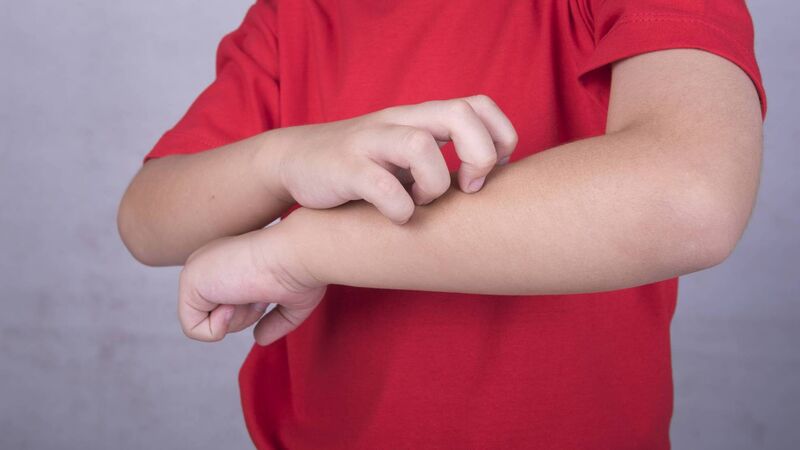Back to basics to create good management of childhood eczema

Eczema is an inflammatory reaction that leads to dry, red and itchy skin. Picture: Stock
ECZEMA can be a really uncomfortable condition to suffer from, and parents in particular often spend a lot of time, money and headspace on trying to get on top of a flare-up in their children.
It can be really difficult and frustrating to see them suffer from it.
What is it?
Eczema is an inflammatory reaction that leads to dry, red and itchy skin. It commonly presents in childhood, but adults are not exempt from experiencing it for the first time either. Its severity can fluctuate, varying from small manageable patches of dryness to large areas of redness, soreness and sometimes even weeping of the skin if infection sets in.
If this becomes the case, a temperature may also occur. Diagnosis involves examining the skin and taking a detailed history.
Where does it show up?
Any area of the body can be infected, but particularly in the joints, like at the elbow crease, behind the knees, or on the hands due to frequent hand washing. Identifying the reason for flares can be useful, but the reason isn’t always fully clear either.
There’s a multitude of offerings available in relation to skincare and treatment for eczema. It’s really helpful to be linked in with a healthcare professional, or a group of them such as a GP, dermatologist and pharmacist, who are familiar with your child’s own particular case, and flare-up patterns.
Management can be overwhelming - when you consider the hundreds of products marketed towards alleviating these symptoms, it can feel like a minefield.
Management of atopic eczema was recently reviewed by NICE, who provide healthcare recommendations and update them regularly, and this will guide the advice you receive.
Management plan
A good eczema management plan should be discussed with your care team, and ideally laid out really well visually in writing. This can be put somewhere visible at home such as the bathroom, near where you would usually wash and apply the products.
Management has two steps to its approach, and the level of management you use depends on the condition of the skin. Regardless of which step you’re implementing however, you should (a) always wash hands before applying any creams, and (b) not use hands to take cream from a large tub, as this can lead to contamination, and ultimately spreading bacteria onto potentially broken skin. Instead, you should use clean spoons to scoop product from a tub, or use product from a tube instead.
Step 1: Maintenance. If skin is clear and not currently flaring up, then moisturising is the key to keeping it that way. The more, the better! It’s advised that you moisturise at least twice daily, all over the face and body.
How you apply the product matters too, and the care team can guide you on how to smooth it onto the skin, rather than rubbing and further irritating.
Ask your team which moisturiser to use, and stick to it, unless it causes problems, and then it should of course be changed. A review of products at least once a year is advised.
You can wash using either a leave-on emollient, or an emollient soap substitute, something that’s non-perfumed, and not a bath oil.
A bath of a tepid temperature of 32 degrees (a little under body temperature) for a maximum of ten minutes should be taken each day, and you shouldn’t wash your hair in the bath water. Shampoo should be suitable for eczema.
Step 2: Treat. If, however, the skin is red, itchy, broken and generally flaring up, then the process you undertake should add the use of a flare control ointment to the moisturising routine.
Again, enlist the help of your care team to identify which ointment to use, and this may be different for face and body. You should apply it either once or twice daily, according to their recommendation, only to the affected areas. Using a helpful approach called the fingertip unit measurement, remember that a fingertip amount is enough to apply to two adult hands.
You would still continue your moisturising routine, but you would separate the application of the moisturiser and flare ointment by 15 minutes to allow for optimal absorption.
This step would be implemented for an advised number of days, before reviewing again to see if there’s been an improvement.
Typicially, after about 48 hours of settled skin you can go back to the Step 1 maintenance approach. If improvement doesn’t occur, you need to regroup and consider next steps, which might involve an antibiotic or stronger cream.
The above approach to management helps to simplify it somewhat. Stripping back all the noise in terms of products and approaches, you can keep it achievable by asking the question “how does my skin look today?” and based on that answer, decide on which step is best.
Linking in regularly with the care team will increase your confidence for self-management, and hopefully improve the outcomes too.






 App?
App?





